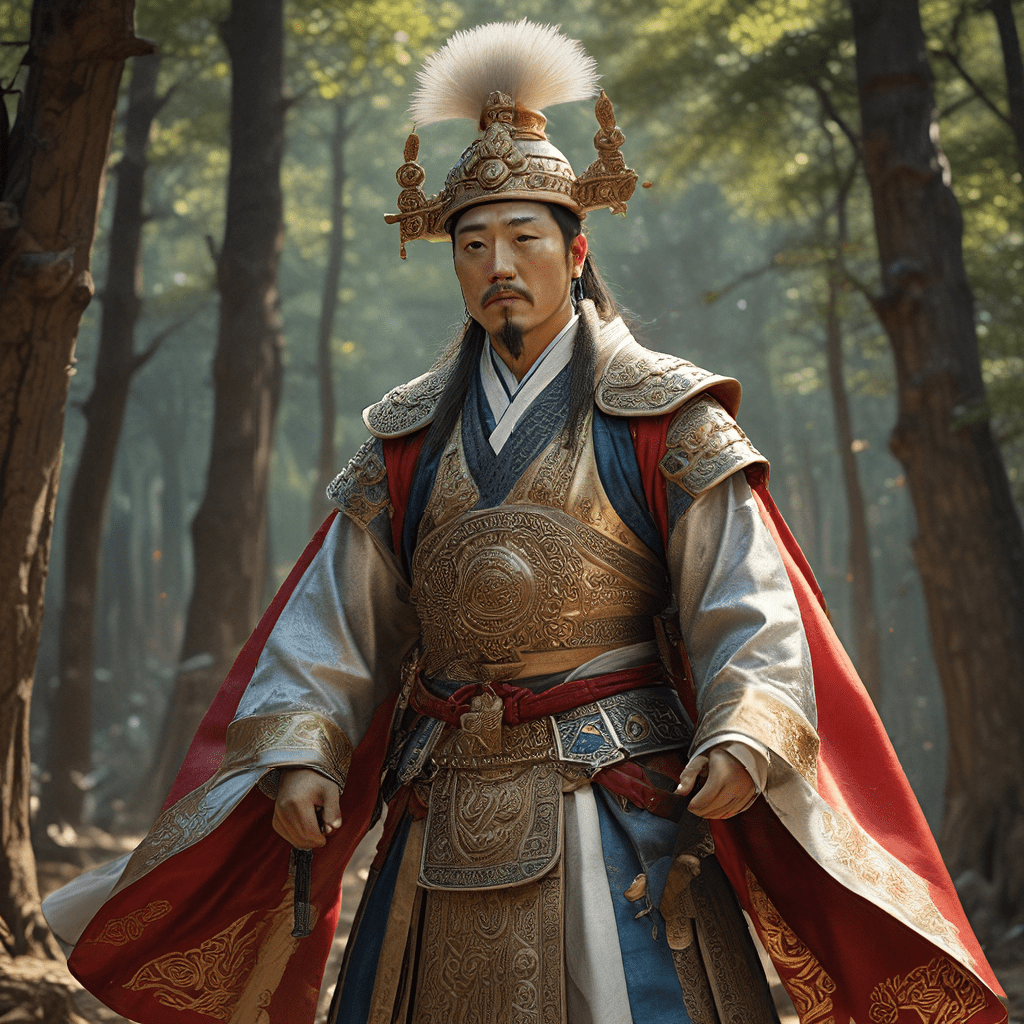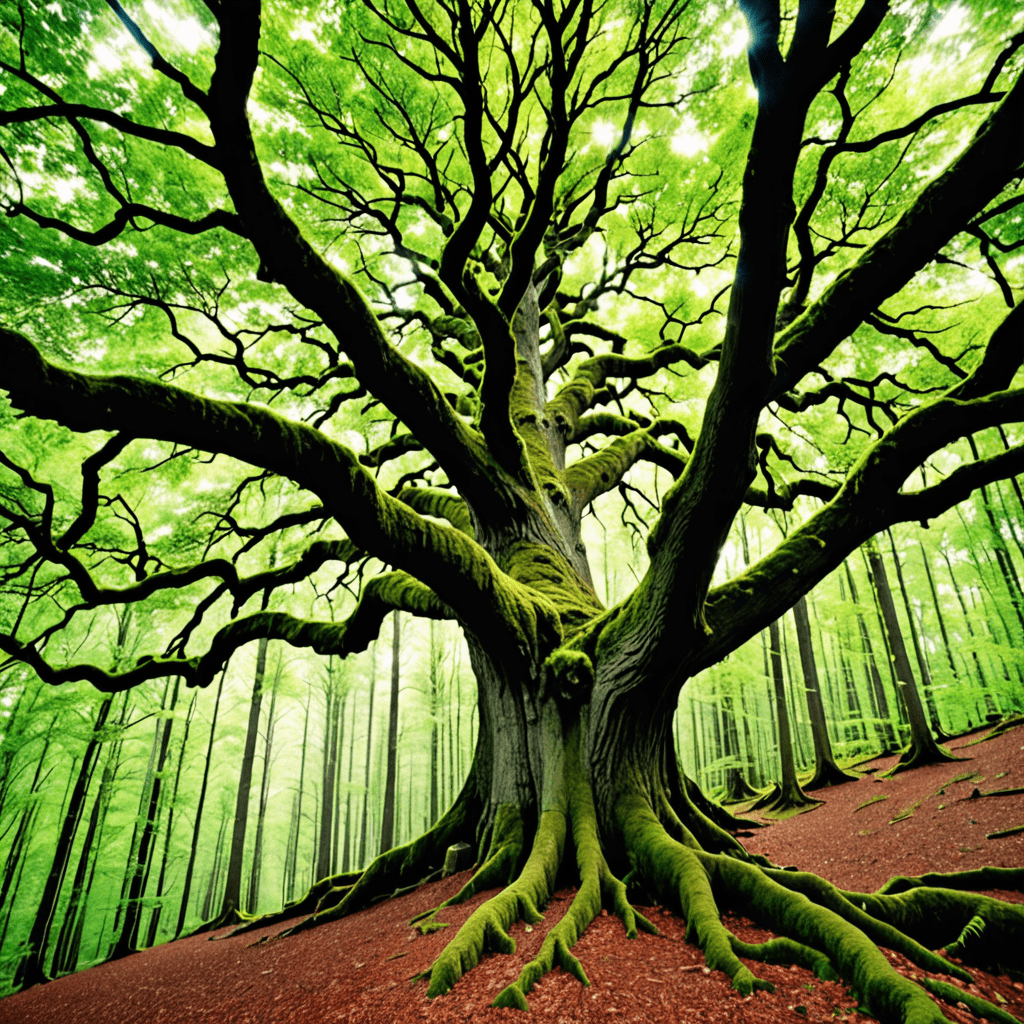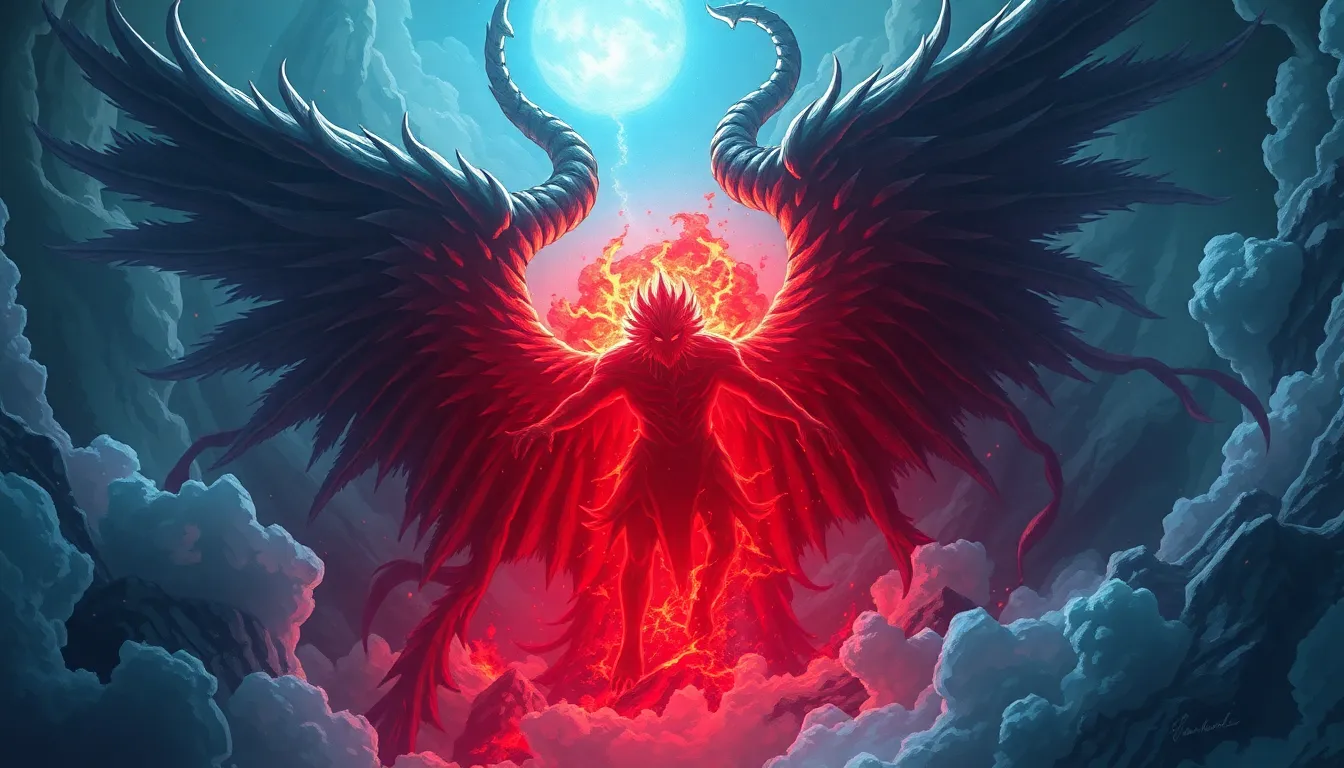The Legend of King Muryeong: A Foundation Myth for Baekje
In the rich tapestry of Korean history, the legend of King Muryeong stands as a powerful testament to the enduring influence of myth and folklore. As one of the most revered monarchs in Baekje, his reign (501-523 CE) marked a pivotal chapter in the history of the ancient kingdom, laying the foundation for a golden age and solidifying its place in Korean cultural consciousness. While historical records paint a picture of a skilled and strategic ruler, it is the mythical narratives surrounding his life that have truly captured the imagination of generations. King Muryeong's story transcends the boundaries of historical fact and enters the realm of legend, offering a glimpse into the beliefs and aspirations of the Baekje people.
The King’s Life and Legacy: Historical Facts and Myths
King Muryeong, also known as Samcheok-wang, was the 25th ruler of Baekje, a powerful kingdom that flourished on the Korean peninsula for over 700 years. His reign is marked by significant advancements in art, culture, and military prowess. Historians credit him with strengthening Baekje's defenses against its ever-growing rival, Silla, and fostering trade with the kingdoms of China and Japan. His legacy is also inextricably intertwined with the construction of a magnificent tomb, a testament to his royal status and a source of fascination for archaeologists and historians alike.
While historical accounts offer a glimpse into his achievements, it is the mythical narratives that truly bring King Muryeong to life. These stories, passed down through generations, weave together elements of history, folklore, and the supernatural, creating a complex and captivating image of a king who was more than mortal.
King Muryeong and the Emergence of Baekje: A Powerful Ruler in a Turbulent Era
The period during which King Muryeong ruled was a time of intense political and military turmoil on the Korean peninsula. Baekje, along with the kingdoms of Silla and Goguryeo, fought for dominance, engaging in relentless battles for territory and control. King Muryeong, renowned for his strategic brilliance and military prowess, rose to the occasion, leading Baekje to victory in numerous battles. He is credited with expanding the kingdom's borders, repelling attacks from its rivals, and solidifying its position as a major power in the region.
His strategic brilliance extended beyond military strategy. He understood the vital importance of building alliances and forging diplomatic ties. King Muryeong developed strong relationships with the kingdoms of China and Japan, fostering trade and cultural exchange, further enhancing Baekje's power and influence. These strategic endeavors allowed the kingdom to withstand the pressures of a turbulent era, establishing a foundation for a period of prosperity and cultural flourishing.
The King’s Tomb: A Monument to Royal Power and Artistic Achievement
The tomb of King Muryeong, located in Gongju, South Korea, is a testament to the grandeur of Baekje culture and a source of enduring fascination for historians and archaeologists. It is a masterpiece of architectural ingenuity and artistic expression, showcasing the height of Baekje craftsmanship. Excavated in 1971, the tomb yielded an astonishing array of artifacts, providing valuable insights into the life and times of the king.
The tomb's construction reflects the sophisticated engineering and architectural skills of Baekje artisans. The burial chamber is adorned with intricate murals and sculptures, depicting scenes from Baekje mythology and royal life. The tomb also contains an array of precious artifacts, including gold jewelry, bronze mirrors, and exquisite pottery, highlighting the wealth and sophistication of the Baekje court. The artifacts unearthed from the tomb have been invaluable in piecing together the social and cultural fabric of Baekje society, offering a glimpse into the daily lives of the elite and the commoners.
The Legend of the Dragon King’s Son: Muryeong’s Divine Origins and the Baekje Lineage
Beyond his historical achievements, King Muryeong's legend is closely intertwined with the belief in his divine origins. According to a prevalent myth, he was the son of the Dragon King, a powerful deity associated with water and the sea, who descended to Earth to rule Baekje. This belief, deeply rooted in Baekje folklore, solidified his legitimacy and elevated his status to that of a divine king.
The legend tells the story of a fisherman who accidentally catches a golden fish. The fish, no ordinary creature but the transformed Dragon King, pleads for mercy and offers a boon in exchange for its release. The fisherman, impressed by the Dragon King's sincerity and wisdom, grants its request. In return, the Dragon King bestows upon the fisherman a magical elixir, promising that his offspring would inherit the throne of Baekje. True to the Dragon King's prophecy, the fisherman's son became the revered King Muryeong, ensuring the continuation of the Baekje lineage and strengthening the kingdom's divine mandate.
The Prophecy of the White Horse: Foreshadowing King Muryeong’s Rise to Power
Another captivating legend associated with King Muryeong is the prophecy of the white horse. This story, passed down through generations, reinforces the notion that his rise to power was divinely ordained. According to the legend, a white horse, a symbol of purity and divine favor, appeared before the king's ancestors, a sign that they were destined to rule Baekje. The white horse, a creature of immense power and grace, is often associated with the divine in Korean mythology. Its appearance represents a divine blessing, a sign that the ancestors were chosen to lead the Baekje people. This story, woven into the tapestry of Baekje folklore, further solidified King Muryeong's legitimacy as a divinely appointed ruler. The legend of the white horse added to the aura of mystique and divine favor surrounding King Muryeong, cementing his place in the hearts and minds of the Baekje people.
The Myth of the Three Treasures: The Divine Gifts That Gave Baekje its Strength
Adding to the mystique surrounding King Muryeong's reign is the legend of the Three Treasures. According to this belief, the King received three sacred objects from the gods, bestowing upon Baekje immense power and prosperity. These treasures symbolized the divine favor that protected and guided the kingdom, ensuring its success and longevity. The Three Treasures, each possessing unique powers and representing different aspects of the divine, are said to have been:
- The Sword of the Dragon King: This powerful sword, bestowed by the Dragon King himself, symbolized the kingdom's military strength and its ability to defend itself against any adversary.
- The Mirror of the Sun Goddess: This magical mirror, a gift from the Sun Goddess, symbolized Baekje's wisdom and enlightenment, enabling the kingdom to navigate the challenges of the era.
- The Jade Seal of the Jade Emperor: This sacred seal, gifted by the Jade Emperor, the supreme ruler of Heaven, symbolized Baekje's prosperity and the divine favor that ensured its continued success.
The legend of the Three Treasures further reinforces the notion that King Muryeong's reign was guided by divine favor. It speaks of a time when Baekje enjoyed the blessings of the gods, leading to a period of unprecedented prosperity and cultural flourishing. This belief served to unite the Baekje people, instilling a sense of national pride and confidence in their kingdom.
Theories of the King’s Legacy: The Role of Myth in Shaping Korean History
The legend of King Muryeong is not simply a collection of fantastical stories but a powerful reflection of the Baekje people's beliefs and aspirations. Its enduring influence can be seen in the way it shaped the kingdom's identity, its relationship with the divine, and its place in Korean history. The stories surrounding his life, passed down through generations, served to solidify the legitimacy of the Baekje monarchy. They also reinforced the notion that the kingdom was guided by divine favor, ensuring its continued prosperity and success.
The myths surrounding King Muryeong are not simply historical fabrications, but expressions of the Baekje people's hopes and fears. They reflect their desire to understand the forces that shaped their lives, seeking explanations for both the triumphs and tribulations of their existence. Whether based on historical facts or fueled by the imagination, these legends served to unite the people, instilling a sense of shared identity and purpose. They provided a framework for understanding their place in the world, and their connection to the divine.
The Legend of King Muryeong and the Baekje Identity: A Symbol of National Pride
The legend of King Muryeong is not merely a story but a powerful symbol of Baekje identity. His reign, marked by both historical achievements and mythical narratives, became a source of national pride for the Baekje people. The stories of his divine origins, his military victories, and the blessings of the gods, all contributed to the creation of a national mythology that unified the kingdom and instilled a sense of shared history and purpose. The legend of King Muryeong, passed down through generations, served to bind the Baekje people together, reminding them of their shared heritage and their place within a larger cultural and historical narrative.
The stories about King Muryeong, whether historical or mythical, became a touchstone for Baekje identity. They provided a framework for understanding their past, a source of inspiration for the present, and a vision for the future. The legend of King Muryeong, embedded deep within the Korean cultural consciousness, continues to shape the way Koreans view their past and their present, standing as a testament to the enduring power of mythology.
The Lasting Impact of King Muryeong: From Legend to Modern Representation
The legend of King Muryeong continues to resonate in Korean culture today. His story is frequently featured in Korean literature, art, and film, reminding Koreans of their rich cultural heritage and the enduring power of their historical narrative. The tomb of King Muryeong, a testament to his royal status and a remarkable example of Baekje architecture, attracts visitors from all over the world. Its presence serves as a constant reminder of the Baekje kingdom's cultural achievements and the enduring legacy of King Muryeong.
The legend of King Muryeong, a testament to the power of mythology to shape history and shape national identity, continues to inspire and fascinate. His story, a blend of historical fact and mythical narrative, stands as a testament to the enduring power of storytelling and its ability to connect generations. Whether viewed as a historical figure or a mythical hero, King Muryeong remains a powerful symbol of Baekje culture and a source of national pride for Koreans.
FAQ:
Q: What is the most important thing to know about King Muryeong?
A: King Muryeong was a powerful and influential ruler of Baekje, a kingdom that flourished on the Korean peninsula for over 700 years. He is known for his military prowess, his strategic brilliance, and the magnificent tomb that was built in his honor. But there is more to his story than history: he is also a legendary figure, whose life is intertwined with myth and folklore.
Q: What is the most famous legend about King Muryeong?
A: One of the most famous legends about King Muryeong is that he was the son of the Dragon King, a powerful deity associated with water and the sea. This belief, deeply rooted in Baekje folklore, solidified his legitimacy and elevated his status to that of a divine king. Other popular legends include the prophecy of the white horse and the myth of the Three Treasures.
Q: How does King Muryeong continue to be remembered today?
A: The legend of King Muryeong lives on today through his impressive tomb, located in Gongju, South Korea. This magnificent structure, a testament to his royal status and Baekje craftsmanship, attracts visitors from all over the world. His story is also featured in Korean literature, art, and film, reminding Koreans of their rich cultural heritage and the enduring power of their history.



